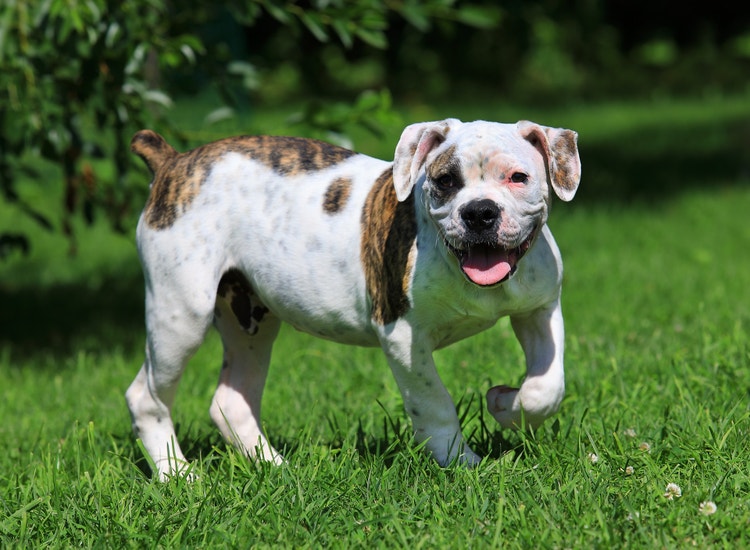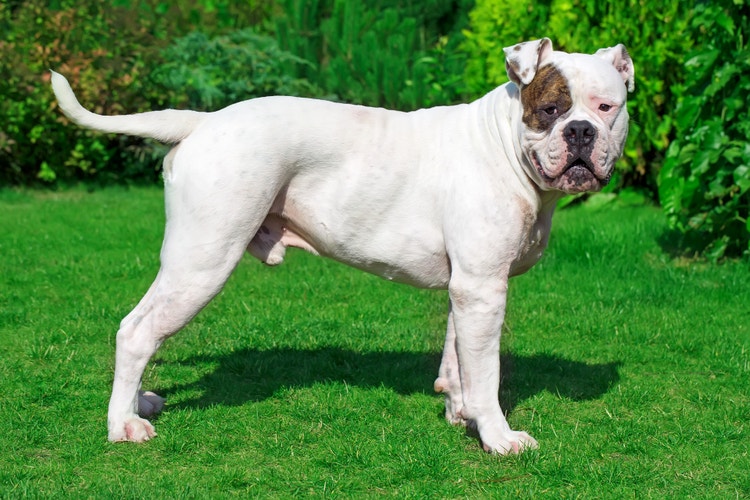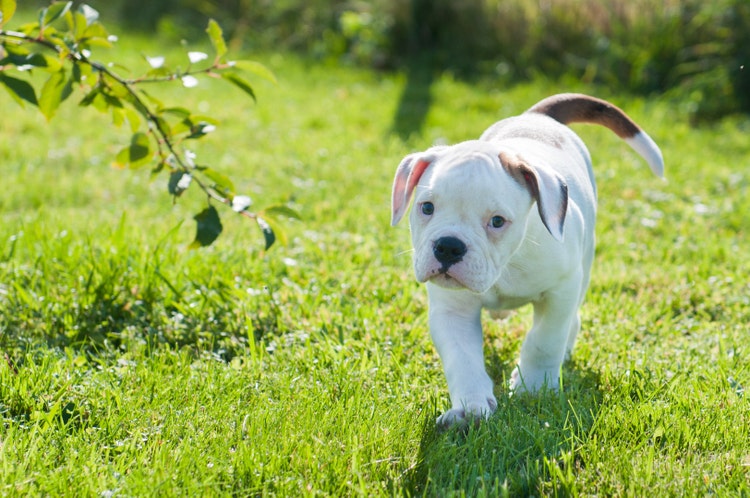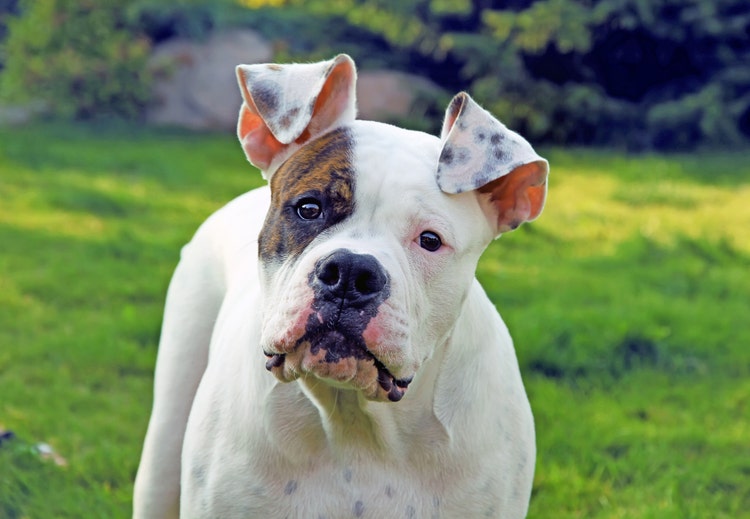

American Bulldog


When Was the American Bulldog Breed Developed?
The American Bulldog breed was developed in the southern United States sometime in the 1700s. They were created by crossbreeding the English Bulldog, the American Pit Bull Terrier, and the Bullmastiff, and intended to be a massive, powerful, and ferocious breed. They were initially used as farming dogs to help herd larger animals and hunt potential predators.
There are two different versions of the breed: the Classic, which is larger than the Standard version, and the Standard version, which is slightly smaller and has a shorter muzzle.
The American Bulldog has yet to be recognized by the American Kennel Club.
Caring for an American Bulldog
What Kind of Diet Does an American Bulldog Need?
What Kind of Diet Does an American Bulldog Need?
Bulldogs should be fed a high-quality, well-balanced large-breed dog food for their first 14 months to ensure proper bone and muscle development. Because of their sheer size, feeding will become expensive over time. Consult your veterinarian to help determine a healthy meal plan.
How Much Grooming Does an American Bulldog Need?
How Much Grooming Does an American Bulldog Need?
A monthly bath and brushing are enough to keep an American Bulldog healthy and happy. They do, however, tend to drool and slobber quite a bit, so keep their lips and the skin around the mouth clean and dry to prevent bacterial infections.
Are American Bulldogs Healthy?
Are American Bulldogs Healthy?
Like most large-breed dogs, American Bulldogs are prone to a variety of diseases.
They should be screened for hip and elbow dysplasia at a young age. Hip dysplasia is a common congenital disease caused by an improperly developed hip joint, which prevents smooth and natural movement of the hind legs. Dogs with this condition typically need surgery to walk comfortably. Elbow dysplasia is a similar condition that affects the front limbs.
The American Bulldog breed has an average life expectancy of 10 to 12 years.
American Bulldogs are predisposed to: hip dysplasia, elbow dysplasia, brachycephalic syndrome, laryngeal paralysis, epilepsy, hypothyroidism, patent ductus arteriosus, tetralogy of Fallot syndrome, ventricular septal defect, aortic stenosis, urolithiasis, deafness, demodectic mange, entropion, prolapse of the third eyelid (cherry eye), and osteosarcoma.
How Much Training Does an American Bulldog Need?
How Much Training Does an American Bulldog Need?
Positive reinforcement training and socialization must be started at an early age for this breed. Without proper training, they can become aggressive toward other animals and strangers, due to their natural instinct to guard and protect.
This is not a dog for first-time pet owners. Those with training experience and an active lifestyle are best suited for this breed.
How Much Exercise Does an American Bulldog Need?
How Much Exercise Does an American Bulldog Need?
This is a massive dog breed with a high energy level that loves to play and interact with their owners. They need to be walked two to three times a day for at least 20 minutes to keep them healthy and out of trouble.

Are You Ready to Adopt an American Bulldog?
To adopt an American Bulldog, start by making sure a dog of this size and demeanor will fit your lifestyle. Use our pet adoption checklist to walk through each step in the adoption process. Complete the necessary adoption applications and be prepared for interviews or home visits. Spend time with potential dogs to find a good match. Finally, prepare your home for the new pet, ensuring it's safe and welcoming.

Pet Insurance Options for American Bulldogs
Pet insurance for an American Bulldog may help cover costs for conditions like cancer and elbow dysplasia. Consider a policy that includes hereditary and congenital conditions, flexible coverage options, and reasonable premiums.
Use our insurance aggregator tool to compare providers and find the best plan for your dog's unique needs.
What Are the Physical Characteristics of an American Bulldog?
American Bulldog Facts
Other Breeds to Explore
References
- Morris, Desmond. Dogs: The Ultimate Dictionary of Over 1,000 Dog Breeds. Trafalgar Square, 2002.
- American Kennel Club. The Complete Dog Book. Random House Digital, Inc., 2006.
- Wilcox, Bonnie and Chris Walkowicz. The Atlas of Dog Breeds of the World. T.F.H Publications, Inc., 1995.
- The Johnson and Scott Lines. National Purebred Dog Day. 2020.


